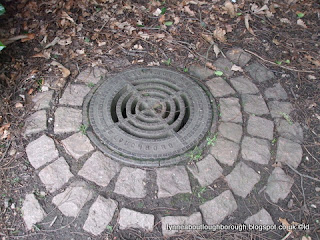Apologies for not blogging last week: my internet connection disappeared into the ether and I was without contact with the outside world - except I could phone people or visit them or send them a letter!!
I was lucky enough a couple of weeks ago to attend a lecture at the refurbished City Hall in Leicester delivered by Sir Peter Soulsby on the subject of Leicester - its history through architecture. This was part of the City Series lectures organised by the Leicester Urban Observatory, a joint venture between Leicester City Council, De Montfort University, Leicester University and Loughborough University, which aims to explore the urban development, architecture and history of Leicester.
See the following websites for more info:
Sir Peter's page
The Leicester Urban Observatory Project page
De Montfort University's involvement
It was an interesting lecture, with an interested audience, and we romped through the centuries in Leicester, as well as learning of Sir Peter's vision for the city. Sadly, there seems little co-operation and understanding between city and county. As we know, there is to be new GCR Museum at Birstall, which is scheduled to open in 2021, Abbey Pumping Station is likely to be refurbed, a Science Park is being developed near the National Space Centre, and there are plans afoot to revamp the Jewry Wall Museum, I would imagine partly because of more Roman finds at the latest dig on High Cross Street.
Enough of Leicester!! Last weekend I was also lucky enough to attend the latest Loughborough Archaeological and Historical Society (LAHS) talk given by Roger Bisgrove, Chair of the Swannington Heritage Trust, on the industrial history of Swannington. This was simply fascinating, covering Swannington through the ages, from coal mines (bell pits) from the 12 hundreds (1200s), through coal mines (gin pits) in the fifteen hundreds (1500s), to Newcomen boilers in the 1700s, Jessop's tramway, the Charnwood Forest Canal, and the Charnwood Forest Railway. Oh, and, of course the Hough Windmill and the Califat Spinney.
Back at work, I happened upon a book called "Vanishing Victoriana" and was particularly taken with the chapter on graves! The chapter was lamenting the poor state of many of the London cemeteries, and this made me consider our own, on Leicester Road. Loughborough Cemetery was created in about 1857, just after the peak of the popularity of Swithland slate gravestones, thus many of the headstones to be found in the cemetery are not made of slate, but rather of Carrara white marble with lead lettering, of sandstone, of polished pink granite, of Portland stone or of polished black granite. There are large memorials, small memorials, single plots and family plots, elaborate and plain, and quite a number of war graves. The grounds are maintained, although the edges can be quite overgrown in summer. The railings surrounding the cemetery, and the wrought iron birdcage turnstile are typical of the town. The chapel building, designed by the Lincolnshire architects Bellamy and Hardy, was refurbished sometime after 1994. The building had a chapel for the Church of England worshipers and one for Nonconformists. Since its refurb it has been let out to various companies.
 |
 |
 |
You are welcome to quote passages from any of my posts, with appropriate credit. The correct citation for this looks as follow:
Dyer, Lynne (2017). Leicester, Swannington and Loughborough. [Online] Available from: http://lynneaboutloughborough.blogspot.com/2017/02/leicester-swannington-and-loughborough.html [Accessed 11 February 2017]











No comments:
Post a Comment
If you have found this post interesting or have any questions about any of the information in it do please leave a comment below. In order to answer your question, I must publish your query here, and then respond to it here. If your information is private or sensitive, and you don't wish to have it on public display, it might be a better idea to email me using the address which is on the About Me page, using the usual substitutions: if you take the email route, our conversation remains private, and is not published on the blog. Thanks for reading the blog.